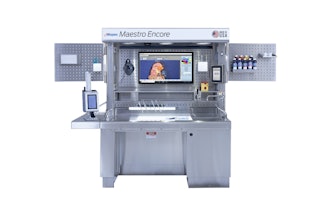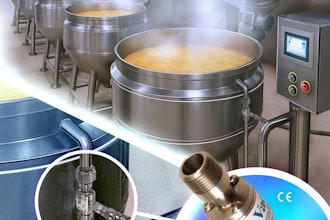Within a wide variety of industries, the requirement to pinch-off and hermetically seal ductile metal tubulation (tubing) is a critical and necessary process when separating a device from a vacuum pumping station. Tools that can reliably perform the pinch-off (cold weld) function will produce a reliable seal that can withstand bake-out temperatures up to 600o C and eliminates the necessity of using expensive valves to perform the same process. The tube pinch-off and resulting cold welded (hermetically sealed) joint is accomplished in a single step using these effective tools. Although this pinch-off process is most commonly used in vacuum applications, they are equally effective with applications involving high or low pressure. Without question, the most important factor in achieving this cold welded joint is the tubing itself. Select the wrong tubing and the results will be very disappointing.
Selecting the Proper Tubulation Material
Achieving a dependable, repeatable cold welded joint when using mechanical pinch-off tools requires the proper tubing material and tube preparation. All conditions must be met to yield a hermetically sealed joint. Without question, the tubing material and heat treat is the most critical factor in this process. Tubing that is too hard will fatigue and separate before the pinch-off tool can complete its cycle, thereby resulting in a compromised cold welded joint and a leaking or questionable seal. Using tubing that is too soft will result in the tube failing to separate, leaving a very fine web of material that requires the technician to physically “wiggle” the excess material to achieve separation.
The tubing most commonly used for mechanical pinch-offs is OFHC (Oxygen Free High Conductivity) Copper, which - when produced properly - is annealed at 650o to 850o C for 30 minutes in a dry hydrogen atmosphere, resulting in a malleable tubing material that will pinch-off properly and will not separate prematurely. High purity nickel (“A” Nickel, NI 270, NI 200 or 99.4% pure Nickel ASTM-B161) also offers several advantages for the cold welding process, including minimal outgassing during bake-out and pinch-off, minimal oxidation and higher bake out temperatures. For the purposes of performing a mechanical cold welded joint with a mechanical pinch-off tool, the nickel must be fully annealed at 1150o C for 30 minutes to achieve the correct tube hardness. Other approved and commonly used materials include: aluminum (annealed 3003 H14, 98% classified non-heat treatable), pure iron, gold, platinum, silver, and columbium.
Additional Tube Selection Factors
Another tubing factor that can affect the quality and consistency of the pinch-off is wall thickness. Heavy wall tubing that may also exceed the proper hardness specification will require more tool pressure to compress and pinch-off or separate the tubing. As all tubing will work-harden during the pinch-off process, any variation in tube hardness or wall thickness will directly affect the quality and reliability of the pinched-off tube. Having tubing evaluated by the tool vendor is a very important step in the process and should not be avoided. All of the factors discussed above need to be addressed carefully before finalizing the tube or pinch-off tool source. Applications involving a cold welded tube pinch-off are almost always critical applications that rely heavily upon the quality and reliability of the cold welded joint. Tube seal failure often results in sizeable losses from both a financial and product performance perspective.
Pinch-off Tool Selection
Selecting the proper tool to perform the cold weld pinch-off process will also depend on many factors, including tubing's size and material, the frequency of use and whether the tubing is exposed to extreme hot or cold temperatures. Clearance and accessibility will also determine the style, profile and angle of the pinch-off jaw required. The standard jaw angle on the scissor style tools will usually be 45o. Special jaw angles and profiles may be required to meet certain requirements.
The most effective tools for performing the pinch-off process are powered via hydraulic pumps. The pinch-off jaw closure force required to successfully cold weld will be in excess of 5000 psi. In addition, the carbide pinch-off rollers that make contact with the tubing must be precision ground to insure the pinch surface is consistent and resists wear. Although there are a few hand held mechanical pinch-off tools available, the pinch-off produced by these tools are often inconsistent. Hand tools simply can’t generate enough closure force to yield a hermetic seal on a consistent basis for highly critical applications.
Hydraulic pinch-off tools are available in a variety of sizes and styles, configured with a variety of hydraulic pumps, depending upon the application. Handsets and pinch jaw models are available for tubes ranging from 1/16 - 1” diameter. Hydraulic pumps are available in either pneumatic or electric models and can be further modified for low or high volume applications. It’s important to match the correct handset and pump combinations to the job being performed.
Summary
Applications that involve the necessity to cold weld and hermetically seal tubulation are typically critical by nature. In other words, these tubes must be hermetically sealed and remain in the condition indefinitely, under a wide range of temperatures and environmental conditions. As a result, it is imperative that both the tubing and the tool selected for the application be matched properly. When done correctly, the end result will be a cold welded joint that will remain hermetically sealed for the life of the product being produced.























